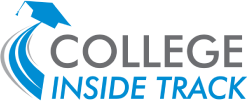Student Loan Option if You Need to Borrow
 If you are still looking to fill the financial gap for your student’s college cost I suggest that you take a look at these options.
If you are still looking to fill the financial gap for your student’s college cost I suggest that you take a look at these options.
Your first choice should be the Federal Direct loan. That program has low interest rates and flexible terms for repayment once your student graduates college. Some families find it necessary to borrow more that is allowed under the federal loan program (Freshmen-$5,500; Soph.-$6,500; Jr. & Sr.-$7,500).
One place that you can look for additional money is the State of Minnesota. The State has a loan program called SELF that allows a student to borrow up to $10,000 a year. The student does not have to go to a college in MN and there are many out of state schools that are included in the loan program. HOWEVER, not all schools participate so you need to check out whether the college your student is planning to attend is in the program
Another option is the Federal PLUS program. Under this program the parent can borrow the difference between the cost of the college and the amount that your student is receiving from the college.
Unlike the Stafford student loan, the PLUS loan is a parent loan and is the debt obligation of the parent, not the student. Also unlike the Stafford loan, the monthly payments begin upon disbursement.much like the way you pay for a mortgage when you take one out. The current interest rate for a PLUS loan is 7.21%. Make sure that you check out the details of the PLUS loan if you are interested.
Also, unlike the federal student loan, the PLUS program requires a credit check. If the parent does NOT qualify for the PLUS loan, the student may increase their federal loan by an additional $4000 a year or up to $9,500 the first year.
There are several other options. The rates and terms of these other options vary greatly and it is a challenge to sort through all of them. Rates can vary quite a bit and the risk is that you may take out a loan with high interest rates and bad terms. Many families automatically use Sallie Mae as a lender but they often do not have the best rates and terms.
In recent years, Credit Unions have gotten into the student loan business and often have better rates than banks so check out this link to see if a credit union loan would work for you.
My friend Lynn O’Shaughnessy has written a very comprehensive and useful article that describes student loans and has several links to sites that you can look at and compare loans from different lenders.If you are thinking of borrowing I STRONGLY recommend that you read Lynn’s article carefully.
If you need to borrow and all this is making your head spin don’t hesitate to contact me if you want help sorting through your options.
